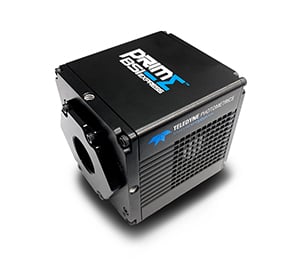Imaging Photon Bose-Einstein Condensate
Mr Chris Toebes, Prof. Pepijn Pinske
Adaptive Quantum Optics, Faculty of Science and Technology, University of Twente, The Netherlands
Background
The Adaptive Quantum Optics Lab in University of Twente performs advanced research on the physics of quantum light for applications in (quantum) information science and technology. PhD student Chris Toebes works in this lab with photon Bose Einstein condensates (BECs).
Mr Toebes explained his work, "We are working on computations based on light, using our photonic BEC system to simulate optimization problems and infer solutions to those problems by carefully monitoring the light that comes out of the system."
A photon BEC is generated at room temperature using a system of curved, highly reflective mirrors placed within microns of each other, and filled with fluorescent dye. The BECs are generated in a microstructural patterning on the mirror, with the end goal is to have hundreds of BECs all communicating in a network.

Figure 1: Images from the Prime BSI Express, each showing two photon BECs (the bright spots on the far
left and far right) and the interference in-between (dimmer spots in-between the bright spots). As the BECs
are able to send photons between each other they generate standing wave patterns. These are two different
configurations, where the top image is out of phase (4 dots) and the bottom image is in phase (5 dots). The
phase of this system can be used as different states for computational purposes.
Challenge
Only a small portion of light can leak outside this system so a highly sensitive camera is necessary, as mentioned by Mr Toebes, "At the threshold where the BEC forms, intensity can be very low. This is where it is useful to have very sensitive cameras. When we measure the light that comes out we need a high signal-to noise ratio... In other operating regimes, the photonic BEC system might be unstable and we need statistics on a lot of data, so a high acquisition rate is required."
Due to the exploratory nature of this work, the Adaptive Quantum Optics Lab requires a camera that is highly flexible, featuring high sensitivity, minimal noise, high speeds, a large field of view, that can be adapted to
custom software.
[The Prime BSI Express] is an ideal camera for this application because of the very low noise combined with the high frame rate.
Chris Toebes, Pepijn Pinske
Solution
The Prime BSI Express is a compact, powerful, flexible CMOS camera that is well suited to this application, featuring a number of different modes including high speed mode (95 Hz full frame, far more at small ROIs), CMS low noise mode, and high dynamic range mode. This kind of flexibility enables the camera to work within this system both now and into the future.
Mr Toebes outlined his experience with the Prime BSI Express, "The camera is really a crucial part of the operation... We considered other technologies but our main reason for going for this was the higher sensitivity and the ease of day to day operation, compared to the hassle of intensified cameras and lack of speed or field of view with EMCCDs."
"We really need to write our own software for this system, a program that analyses images and extracts data. I wrote my own graphical interface to operate the camera and the Python support is very convenient, I didn't have any issues at all."
"The initial setup was as painless as could be, it worked immediately, and the large sensor will really come in handy when we go to large systems."

Learn More About The Prime BSI Express